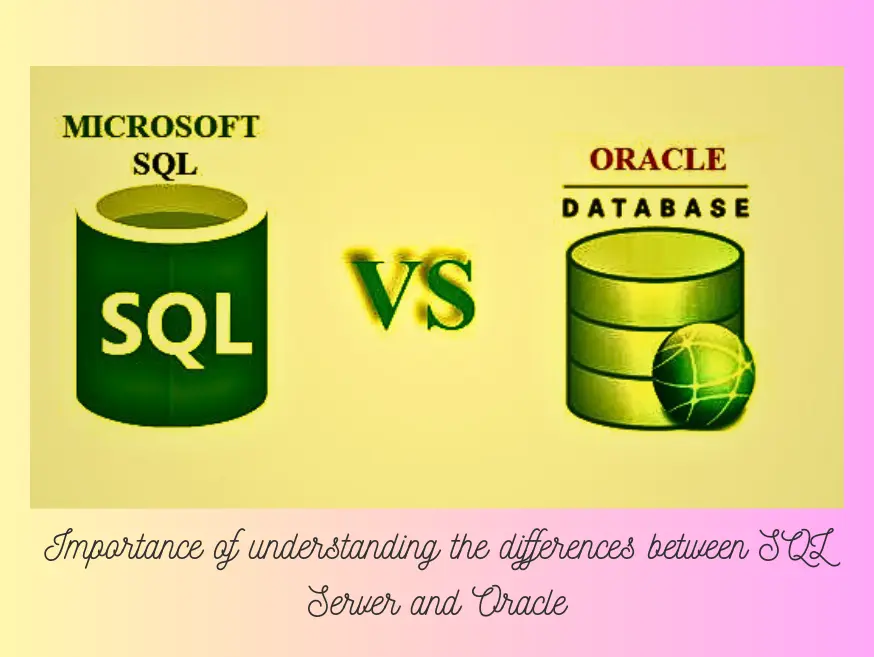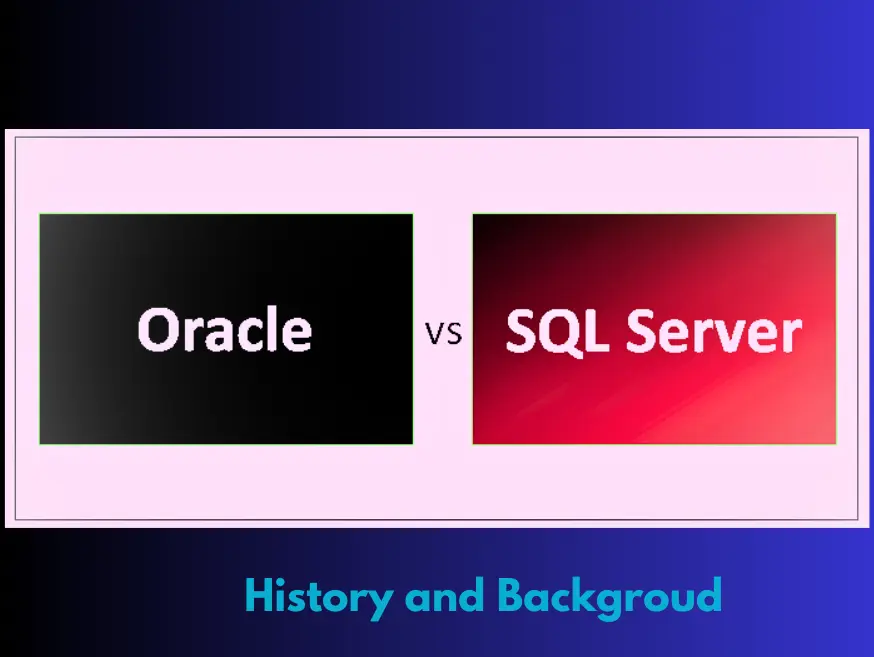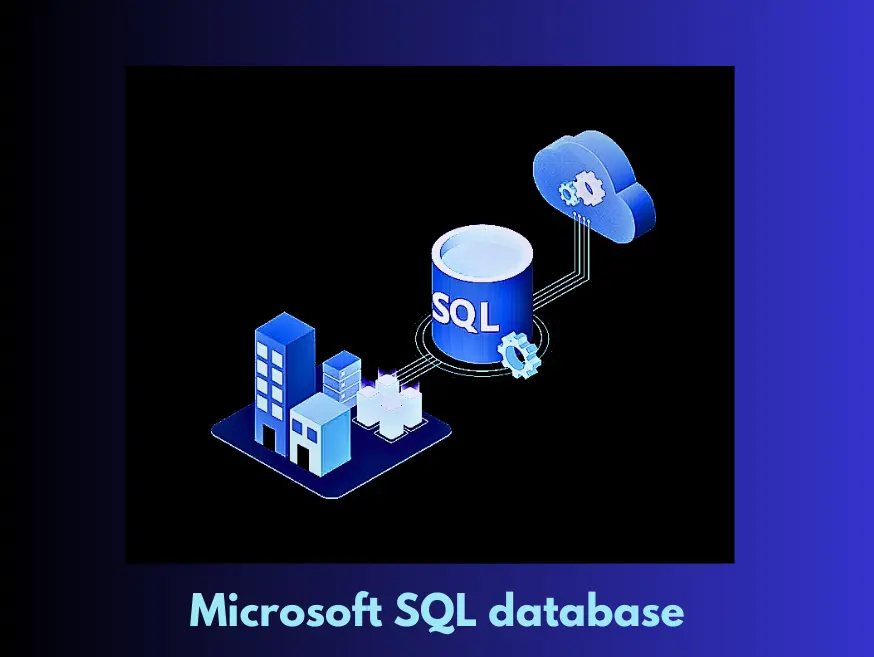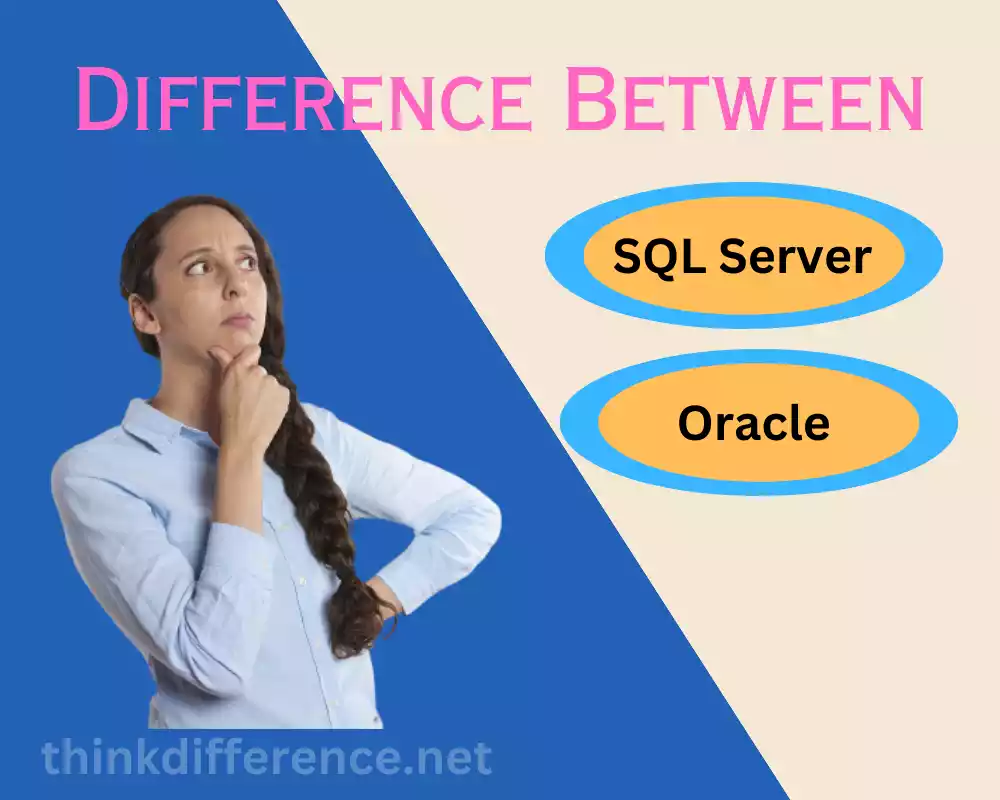Explanation of SQL Server and Oracle
SQL Server and Oracle are two of the most renowned RDBMSs on the market, providing robust solutions for storing, managing, and retrieving structured data. Here’s an introduction to each one: SQL server for SQL server users; Oracle for Oracle users.
SQL Server:
Microsoft SQL Server is an award-winning relational database management system for Windows that features an expansive set of tools and database services for the management of databases. Support for Structured Query Language allows data storage, analysis, and manipulation services ranging from the free Express Edition up to Enterprise editions of SQL Server are offered within each edition tier ranging from Express all the way up to Ultimate edition.
Oracle:
Oracle Database, developed by Oracle Corporation for enterprise use, stands out for its scalability, reliability, and advanced features. Compatible with different operating systems – Windows, Linux, and Unix – Oracle offers numerous tools and functionalities to efficiently manage data; SQL language can be utilized with features including data integrity protection, transaction monitoring, and high availability; various editions such as Standard Edition Enterprise Edition or Express Edition are also available.
Both SQL Server and Oracle databases are utilized by businesses for various industries and purposes, so understanding their differences will aid businesses in making an informed decision on which database solution best serves their needs.
Importance of understanding the differences between SQL Server and Oracle

Understanding the differences between SQL Server and Oracle can be crucial in many areas of life.
- Making a Decision: Selecting between SQL Server or Oracle can have a substantial effect on an organization’s database strategy, with implications such as cost, scalability, and performance considerations influencing which solution best serves its goals and needs. Gaining an understanding of these differences will aid businesses when making informed choices between these options.
- Cost and Licensing: SQL Server and Oracle both feature various pricing and licensing structures that help businesses understand their financial implications and choose an option within their budget. Taking all factors such as initial investment costs, maintenance charges, scaling options, and support services into consideration may help organizations make an informed decision when selecting between these solutions.
- Functionality and Features: SQL Server and Oracle offer distinct features and capabilities, which businesses should understand to select the database system best suited to specific use cases. Consider aspects like data types, query optimizing capabilities, security features, and backup and recovery mechanisms before making their choice.
- Performance and Scalability: Performance and scalability play a central role in database management, and SQL Server and Oracle differ considerably in terms of their respective performances and scaling capacities. Understanding their differences allows businesses to select which database system best meets their workload needs based on factors like concurrent users support, transaction throughput, and response times as well as cost considerations.
- Integration and compatibility: Database systems should fit seamlessly with other platforms and applications within an organization’s technological ecosystem, including operating systems and programming languages, third-party tools, and third party vendors. Understanding SQL Server and Oracle compatibility help businesses assess how well these databases fit within their infrastructure.
- Support and Community: Accessing technical support services such as SQL Server or Oracle is integral for learning database technologies and troubleshooting issues, so understanding their services helps businesses to evaluate both assistance provided as well as user experiences.
Understanding the differences between SQL Server and Oracle helps businesses make more informed decisions, optimize database management strategies, maximize costs-efficiency, utilize appropriate features for enhanced performance, ensure compatibility with their technology stack, and successfully implement and use of their selected database system. It contributes to successful implementation and use.
History and Background

History and Background of SQL Server:
SQL Server, created and developed by Microsoft in the early 80s as an in-house relational database system in collaboration with Ashton-Tate & Sybase, first made its debut for OS/2 operating systems (defunct as of 1989) as version 1.0 in 1989.
Microsoft has continuously worked on developing and improving SQL Server over time, releasing subsequent versions with enhanced features and capabilities. Notable milestones that have occurred throughout SQL Server history are:
- SQL Server 4.2: SQL Server 4.2 was released in 1993 with support for Windows NT as it signaled a transition towards Microsoft platforms.
- SQL Server 6.0: SQL Server 6.0 was first released in 1995 and included numerous enhancements such as improved query optimization, distributed transaction support, and the introduction of SQL Server Enterprise Edition.
- SQL Server 7.0: SQL Server 7.0 was an important milestone in its history when released in 1998; it brought significant enhancements in performance, manageability, and scalability; it also marked a move toward an entirely new codebase and integration data warehouse capabilities.
- SQL Server 2000: SQL Server 2000 was introduced in 2000 with a focus on improving performance and scalability, including new features like Analysis Services for OLAP analytics as well as improved integration into Windows platforms.
- SQL Server 2005: SQL Server 2005 – Released in 2005, this version included numerous improvements such as enhanced security features, native XML support, and the introduction of SQL Server Integration Services.
- SQL Server 2008 and subsequent versions: Microsoft released subsequent editions of SQL Server 2008 that boast notable features like database mirroring, transparent encryption of data, support for spatial information systems, and increased scalability along with high availability options such as Always On.
History and Background of Oracle:
Oracle Database, developed and distributed by Oracle Corporation, is an enterprise relational database system designed for use within organizations. Origins can be traced back to the 1970s when Larry Ellison and Bob Miner created a prototype relational databases management system named “Oracle.” Oracle Corporation was then formed in 1977 with their database officially being released for public consumption later that same year.
Oracle has made significant advances since its creation and is now one of the most popular and revered database systems available today. Oracle has achieved several key milestones along its journey and continues to enjoy widespread adoption today.
- Oracle V2: Oracle V2, released in 1979, introduced features such as concurrency control and data integrity monitoring as well as SQL-based queries.
- Oracle V3 and V4 versions: These versions provide enhanced data management and performance improvements.
- Oracle7: First released in 1992, this version introduced many significant features such as row-level locking support, PL/SQL support, and distributed database systems.
- Oracle8: Released in 1997, this version made notable improvements in terms of scalability and security while adding object-oriented programming support. Oracle also began emphasizing internet computing technologies such as e-commerce.
- Oracle9i and later releases: Oracle introduced newer versions, featuring enhanced features like XML support, grid computing capabilities, and advanced analytics tools such as Oracle Real Application Clusters.
- Oracle Database 10g, 11g, 12c, 18c, and 19c: Oracle has continued its legacy of innovation with each release – now offering in-memory support, JSON data serialization services as autonomous database services as well as cloud integration features.
Oracle has continuously expanded its product offering over time to encompass enterprise applications, middleware, and other technologies.
Licensing and Cost

Comparing SQL Server with Oracle can be daunting, and licensing and cost structures must be assessed carefully in order to make an accurate comparison. Here is an overview of both the cost and licensing considerations of both databases:
SQL Server:
- Licensing Models: SQL Server offers two distinct licensing models for its licensing, Per Core licensing requires you to license each core, whether physical or virtual; while Server +CAL requires that both the server itself be licensed as well as issuing licenses to each device or user that accesses SQL Server.
- Pricing and Editions: SQL Server offers various editions with individual features and pricing structures, such as Express for free use, Standard edition, and Enterprise edition (the latter usually having more expensive options due to advanced scaling features and licensing models). Pricing can range between free, Standard, Enterprise, Express Express Edition, and Standard Express for different licensing models. Pricing also varies by edition selected as Enterprise editions often feature advanced scaling options at more expense than Standard ones.
- Additional Costs: Organizations should also take into account additional expenses like Software Assurance costs – this provides upgrades, support, and access to the newest releases – as well as maintenance/support contracts as well as optional add-ons such as SQL Server Reporting Services.
Oracle:
- Licensing Models: Oracle provides multiple licensing models, including Named User Plus (also referred to as NAUP), Processor, and Cloud licensing options. NAUP requires that each device that connects to its database require its separate license while Processor measures how many physical processor cores exist on a server where Oracle is installed while Cloud models cater specifically towards deployment in cloud environments such as Oracle Cloud Infrastructure.
- Editions and Pricing: Oracle Database comes in different editions Standard Edition 2, Enterprise Edition, and Personal Edition. Each edition boasts different capabilities and features; with Enterprise offering more comprehensive capabilities. Pricing typically depends upon which edition, licensing model and number of processor cores one chooses.
- Additional Costs: Support and maintenance contracts should also be factored into your cost estimates when considering Oracle Database purchase. Such plans typically provide access to patches, software updates, and technical support; licensing fees may be applicable depending on whether optional add-ons such as Oracle Advanced Security or Real Application Clusters are desired.
Pricing details depend on various variables, including region, volume discounts, and agreements negotiated with vendors. Microsoft or Oracle representatives or licensing specialists can provide accurate and up-to-date information regarding licensing costs and costs associated with your software licenses.
Comparison Table of SQL Server and Oracle
This table compares SQL Server with Oracle: its key features and distinctions are highlighted here.
| Aspect | SQL Server | Oracle |
|---|---|---|
| History and Background | Microsoft Developed | Oracle Corporation have developed a new product. |
| Licensing Costs | Models per Core and Server + CAL | Named user plus, processor, and cloud |
| Functionality | Features and data types are abundant | Features and data types that are comprehensive |
| The Performance of a | Efficient query processing, optimization and tuning | High-performance query optimization |
| Scalability | Scalability options for vertical and horizontal | Real Application Clusters (RAC), horizontal and vertical scalability options |
| The Integration of Technology | Microsoft Development Tools and Languages are well integrated | Supports a variety of development tools and programming language |
| Compatibility | Limited Linux support | Supports multiple operating system |
| Supporting Community | Microsoft Support – Active Community Resources | Oracle Support – Active Community Resources |
Conclusion
Both SQL Server and Oracle are powerful and reliable database management systems that have proven their worth in various applications and industries. The choice between them depends on specific requirements, budget constraints, and the scale of the deployment.
While SQL Server excels in smaller environments and offers seamless integration with the Microsoft ecosystem, Oracle is a top choice for enterprise-level applications demanding high performance and scalability. Before making a decision, carefully assess your needs, consider the total cost of ownership, and evaluate the support and community available for each platform.



